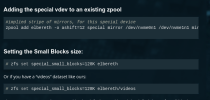Personally I would say, do you REALLY need SLOG? If so, why are you sharing your SLOG with other workloads? Are you running time critical databases? If you use the safe write-back cache options on the VMs, you generally won’t see the need, it cuts in your RAM and because you use your SSD for other purposes may actually end up slowing them down. Read how ZFS works, I would use them as caches if you really feel the need and don’t have a lot of RAM because that is where most workloads benefit.
As far as “partitions” - NVMe drives have namespaces. Hence why a NVMe partition is something like nvme0n1p2 - n1 is the namespace, add a namespace (not sure if the tools are on the Proxmox boot disk, the tool is named nvme) and your NVMe will split into two (or 3 or 4) NVMe and they will appear properly in the setup of Proxmox. And your controller should still do wear leveling across the entire flash, this is just between the controller and the host.


